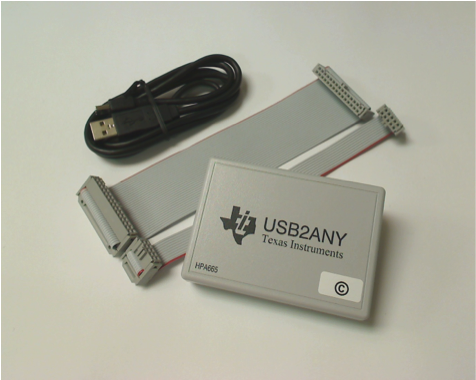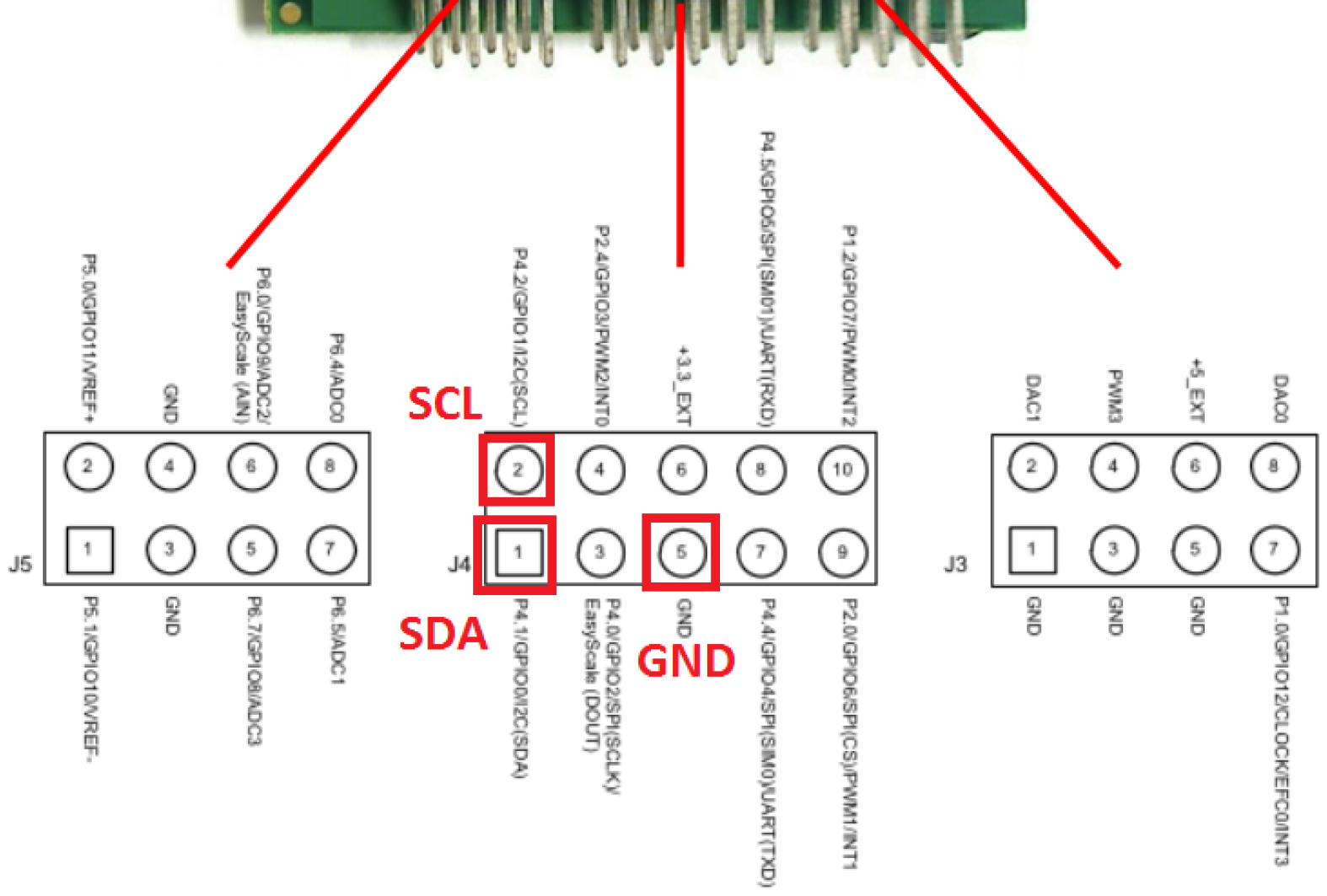SNLU224D September 2017 – February 2023 DS90UB953-Q1 , DS90UB953A-Q1
- Trademarks
- 1Introduction
- 2Quick Start Guide
-
3Troubleshooting
- 3.1 Default Addresses
- 3.2 USB2ANY
- 3.3 ALP Software Setup
- 3.4
Troubleshooting ALP Software
- 3.4.1 ALP Loads the Incorrect Profile
- 3.4.2 ALP Does Not Detect the EVM
- 3.4.3 Error When Opening ALP: One Instance of this Application Can Be Active
- 3.4.4 Error Referring to USB2ANY Firmware Update
- 3.4.5 Identifying USB IDs and Corresponding Devices
- 3.4.6 Set up File for Loading Scripts and Create Buttons for Each Script
- 3.5 Additional Troubleshooting – Step-by-Step Guide
- 4Bill of Materials
- 5PCB Schematics
- 6Board Layout
- 7Related Documentation
- 8Revision History
3.2 USB2ANY
The USB2ANY is required to work with any interactive GUI over I2C, such as ALP (Analog LaunchPAD). Download and install ALP from: http://www.ti.com/tool/ALP.
The USB2ANY is shown in #X944. It is powered through the USB port of computer.
 Figure 3-1 USB2ANY
Figure 3-1 USB2ANYThere are two methods to use the USB2ANY to communicate with the 953/954 EVMs. The first method is to simply connect the USB to Mini-USB cable to the USB port of your computer and the Mini-USB ports on the EVMs, J9 for the 953 EVM (see GUID-B4E14AF5-665F-4ABD-843B-DE811DE083CD.html#X6704) and J2 on the 954 EVM. If using the first method, skip to GUID-901EFD72-B326-4A4D-A71B-4E6EFE3504B9.html#GUID-901EFD72-B326-4A4D-A71B-4E6EFE3504B9. The second method is to use the pinout of the USB2ANY. #X8163 shows the USB2ANY pinout with the I2C pins highlighted. Typically, jumper wires are used to connect these to the 953/954 EVMs.
 Figure 3-2 I2C Pinout of USB2ANY Connector
Figure 3-2 I2C Pinout of USB2ANY ConnectorOn the DS90UB954-Q1EVM (or variant), connect the other ends of the corresponding wires to pins 2, 3, and 4 of J25 labeled SCL, SDA, and GND, respectively.
On the DS90UB95x-Q1EVM, connect the other ends of the corresponding wires to pins 1, 2, and 3 of J5 for 1.8 V, or J6 for 3.3 V labeled SCL, SDA, and GND, respectively. Note that these voltages refer to the pullup voltage used in I2C communication. As a result, check the mode of the I2C adapter before plugging in to the adapter.
Connecting the Mini USB to USB cable from the port of the USB2ANY to the computer should allow ALP to communicate with the EVM. However, if the EVMs are configured to have 1.8 V I2C signal levels (see J5 on the 953 EVM and J16 on the 954 EVM), the USB2ANY must be configured to support the 1.8 V required by the DS90UB95x-Q1EVM and DS90UB954-Q1EVM (or variant). To do this, the user must navigate to the USB2ANY.py script and change the code. The path to the file is given below:
C:\Program Files (x86)\Texas Instruments\Analog LaunchPAD
v1.56.0010\Drivers\i2c_controllers\usb2any\python
Once the usb2any_lib.py script is found, open the script in a text editing program (for example, Notepad, Wordpad, Notepad++, and so forth) and replace Line 61 from:
self.usb2anydll.u2aI2C_Control(self.u2ahandle,1,0,0)
To the following:
self.usb2anydll.u2aI2C_Control(self.u2ahandle,1,0,1)
self.usb2anydll.u2aPower_WriteControl(self.u2ahandle,1,0)
Save the script, close the program, and ALP will now recognize the connection from the board to the USB2ANY.